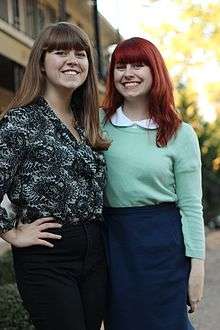Business casual

Business casual is an ambiguously-defined dress code that has been adopted by many professional and white-collar workplaces in Western countries. It entails neat yet casual attire and is generally more casual than informal attire but more formal than casual or smart casual attire. Casual Fridays preceded widespread acceptance of business casual attire in many offices.
Definition
There is no generally agreed definition of "business casual". One definition of business casual states that it includes khaki pants, slacks, and skirts, as well as short-sleeved polo shirts and long-sleeved shirts, but excludes jeans, tennis shoes, tight or short skirts, T-shirts, and sweatshirts.[1] Another source, an American university careers service, states that business casual consist of neutral colors more towards the dark shades of black, grey, navy, but can include white and off white, and reminds that the clothing should be pressed and have clean, crisp seams.[2] The "Dress for Success" advice from the University of Toronto sums up business casual as "a classic, clean cut, and put together look where a full suit is not required", which means slacks, khakis, or skirts; blouses, polo shirts, or shirts with collar but no necktie; some sweaters; and closed-toe shoes.[3] The Canadian university ends with the warning that "it is not clothing you would wear to a club or for athletic purposes.... Don’t let the word casual mislead you. You still need to look professional."[3]
Another author wrote in the Financial Times that "Ordinarily business casual for guys seems fairly clear. It is a pair of chinos, a blazer and a good shirt, no tie."[4]
A BBC article suggested that a "safe global standard" consists of "a button down shirt," "jackets or blazers, khaki or gray slacks, and leather shoes."[5] It warned, however, that great variation exists between countries and regions within countries.[5] A U.S. menswear retailer advises men to wear a collared shirt, chinos, navy blazer, and brown shoes, while making sure to look "clean and well-groomed."[6]
A contributor to Forbes asked her Facebook friends to define business casual, and found an apparent consensus on "For men: trousers/khakis and a shirt with a collar. For women: trousers/knee-length skirt and a blouse or shirt with a collar. No jeans. No athletic wear." A response to that was "I disagree. No khakis." She states that "there’s a lack of consensus in what actually defines a business casual wardrobe. All most people know is they don’t want to see too much of a colleague’s body, including feet."[7]
References
- ↑ "Interviewing | Career Services Center | Marquette University". Marquette University Career Services Center. Archived from the original on 6 September 2013. Retrieved 26 September 2013.
- ↑ "Business casual attire". Virginia Polytechnic Institute and State University. Retrieved 12 March 2014.
- 1 2 "Business formal/professional or business casual?". University of Toronto Mississauga. Retrieved 28 January 2015.
- ↑ Shrimsley, Robert (3 June 2011). "Why business casual makes me smart". Financial Times. Retrieved 14 November 2013.
- 1 2 McGinnis, Chris (22 November 2011). "‘Business casual’ attire around the world". BBC Business. BBC. Retrieved 28 January 2015.
- ↑ "10 Tips for Today’s Business Casual Wardrobe". Fleetwood: Paul Fredrick. Retrieved 11 November 2016.
- ↑ Sylvestre-Williams, Renee (9 May 2012). "What is Business Casual?". Forbes. Retrieved 15 November 2013.